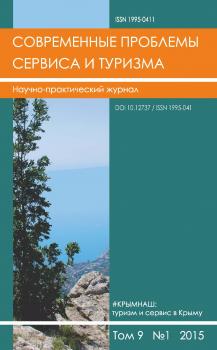In the modern conditions of globalization and the ambiguity of the national identity of countries the increased interest in the cultural tangible and intangible heritage can be seen. This is due primarily to the fact that Russian regions are experiencing the adverse period in the development caused by external sanctions. It led to the fact that tourists are looking for opportunities to spend holidays on the territory of Russia. And in this case, the national artistic trades can be attractive factor of the tourist flow in any region of Russia. National artistic trades are a recognized part of the national culture. Voronezh region is a perspective region for the variety of types of tourism: cultural, educational, medical and health, business, event, ecological, rural and agro-tourism, etc. The relevance of the study of national artistic trades in order to develop a tourist industry is predetermined by the need to develop the regional competitive tourism industry, as well as to achieve the target values of indicators of implementing the Development Strategy of Voronezh region up to2020, in which tourism is one of the basic sectors of the economy. Therefore, the development of national artistic trades, strengthening their role in the socio-economic development of the region, stimulating economic activity of small and medium-sized enterprises, creating favorable conditions for the development of tourism will contribute to the socio- economic growth of the region and attraction of tourists to Voronezh region. The study was financially supported by RFBR Grant 16–46–360686 р_а.
national artistic trades, Voronezh region, tourism, cultural activity, traditions
1. Klitsunova V.A. Problems of using the intangible heritage as a tourism resource. Ustojchivoe razvitie ekonomiki: sostojanie, problemy, perspektivy [Sustainable economic development: state, problems and prospects: Proceed- ings of the VI Int. Scientific and Practical Conf.], April 26-27, 2012. Part 2. Pinsk: Polesie State University, 2012, pp. 107-109. (In Russ.).
2. Khisametdinova F.G. Intangible cultural heritage of the peoples of Russia - the most important resource of the cultural and socio-economic development of the country. URL: https://www.oprf.ru/files/doklkhisametd.doc (Ac- cessed on July 09, 2016). (In Russ.).
3. Yakovenko N.V. National artistic trades as a special brand of cultural tourism in the depressive region (experience of Ivanovo region). Sovremennye problemy servisa i turizma [Service and Tourism: Current Challenges], 2015, vol. 9, No. 4, pp. 62-71. DOI:https://doi.org/10.12737/14533. (In Russ.).
4. Blake J. On Defining the Cultural Heritage. The International and Comparative Law Quarterly, 2000, vol. 49, No.1, pp. 61-85. DOI: http://dx.doi.org/10.1017/S002058930006396X.
5. Douglas N., Derret R. Special Interest Tourism. London: John Wiley & Sons, 2001. 490 p.
6. Fowler P.J. World Heritage Cultural Landscapes: 1992-2002. Paris: UNESCO World Heritage Centre, 2003. 140 p.
7. Lowenthal D. The Heritage Crusade and the Spoils of History. Cambridge: Cambridge University Press, 1998. 358 p.
8. Trauer В. Conceptualizing special interest tourism - Frameworks for analysis. Tourism Management, vol. 27, No. 2, 2006, pp. 183-200. DOI:https://doi.org/10.1016/j.tourman.2004.10.004.





